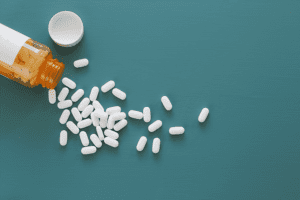In recent years there has been a severe increase in the selling and use of opioids. So much so, that it has been deemed a crisis or epidemic because of how fast opioid addiction continues to spread and how many lives are lost daily, as a result.
Tragically, many opioid addicts are young and they’re dying much quicker and faster than those who chose to dabble in other substances. Much like the crack cocaine epidemic of the 1980s, the opioid epidemic has received significant media coverage and is becoming the poster child for the war on drugs.
The Beginnings of the Opioid Epidemic
In the 1990s there were big pharmaceutical companies that reassured doctors and other medical professionals that patients weren’t able to become dependent on opioids. Because of these statements, healthcare providers decided to prescribe large quantities of these substances.
Opioid use increased exponentially during this time. Unfortunately, once some time had passed, it was quite apparent that the pharmaceutical companies were wrong. Addiction to opioids was, in fact, a terrifying reality.
Some statistics surrounding the opioid epidemic include:
- 130 people die every day from opioid-related drug overdoses
- 10.3 million people misused prescription opioids in 2018
- 2 million people reported having an opioid use disorder in 2018 alone
- 808,000 people used heroin in 2018
- 15,349 deaths attributed to overdosing on heroin between 2018 – 2019
- 32,656 deaths attributed to overdosing on synthetic opioids other than methadone between 2018 – 2019
- Increase in newborns demonstrating withdrawal symptoms due to women using opioids during pregnancies
Consequences of the Opioid Epidemic
The devastating news is that the consequences of opioid addiction seem to be rising, becoming more severe for anyone who misuses their prescription or has an addiction that’s established. This is largely due to the increased prevalence of heroin addiction, as a result of decreased pharmaceutical opioid production as well as more stringent prescribing policies.
The opioid epidemic accounted for more than 42,000 deaths in 2016 alone. Those numbers are higher than any previous year on record.
An estimated 40 percent of these reported opioid overdose deaths involved a prescription opioid. The worst part is that this crisis could have been avoided entirely, had proper education been provided to doctors and patients alike.
Fortunately, stricter measures have been taken regarding opioid consumption, and total deaths did decrease by four percent between 2017 and 2018. However, 2019 opioid death rates were still four times higher than they were in 1999.
Unfortunately, prescription opioid deaths are not even half of the problem. The larger issue seems to be the transition from prescription opioid abuse, to heroin and synthetic opioids like fentanyl.
In 2010, rates of deaths as a result of heroin overdoses skyrocketed, as a possible result of a change in opioid production and distribution. Additionally, in 2013 synthetic opioid overdoses and deaths spiked. This may have been due to the increased use of substances like fentanyl as cutting agents for heroin and vice versa.
Fentanyl
Fentanyl is a synthetic opioid that is prescribed as a pain reliever. It is given to patients who experience severe acute and chronic pain, typically used with advanced cancer patients.
Fentanyl is 50 to 100 times more potent than morphine. It can be prescribed in the form of lozenges or patches. However, many individuals suffering from substance use disorder will use this drug intravenously.
Dangerous and extremely potent, the increase in fentanyl-related deaths is due to the mass production of illegally made fentanyl. It is processed and sold just like heroin and it’s typically cut with heroin and or cocaine.
According to data found in the National Forensic Laboratory Information System, confiscations and seizures of fentanyl increased by nearly seven-fold between 2012 and 2014, leading to a grand total of 4,585 fentanyl confiscations in 2014, alone. By the time 2017 and 2018 rolled around, fentanyl overdoses had increased by 10 percent.
And the number of states reporting 20 or more fentanyl confiscations every six months continues to increase. Data suggests that the quick rise in fentanyl consumption and fentanyl-related deaths could be due in part to the increased availability of illegally made, non-pharmaceutical fentanyl as opposed to strictly prescription fentanyl.
The solution to the Problem
The CDC says that there are three main things that can be done to improve the detection of fentanyl outbreaks.:
- Public health departments can explore methods for the rapid detection of drug overdose outbreaks.
- Medical Examiners and Coroners can screen for fentanyl in suspected opioid overdose-related cases in areas reporting increases in opioid or fentanyl confiscation, overdose, and/or fatalities.
- Law enforcement can play an important role by identifying increases in the distribution and use of opioids and fentanyl and respond accordingly.
Additional Suggestions to Decrease the Impact of the Opioid Epidemic
Finally, the CDC recommends expanding the use of Naloxone, a safe and effective antidote to opioid-related overdoses including heroin and fentanyl. This is a critical tool in preventing fatal opioid overdoses.
Depending on state and local laws these medications can be administered by EMS, law enforcement, other drug users, or family and friend bystanders who have access to the medication. Health care providers need to note that more than one dose of naloxone may need to be administered to the patient, depending on the severity of the overdose.
The CDC suggests that harm reduction organizations conduct more training on naloxone use to those at risk of opioid overdose, as well as their friends and family.
Need Support?
Opioid addiction doesn’t only affect the sufferer. Family and friends of the addict suffer as well, especially in the case of overdose or death. If you or a loved one is suffering from a substance use disorder help is available at any time. However, failing to seek appropriate support can have fatal consequences. If you’re feeling hopeless and scared, remember that recovery is possible and Avalon Malibu is here to help. Call us today for information about our program, at 844-857-5992.











